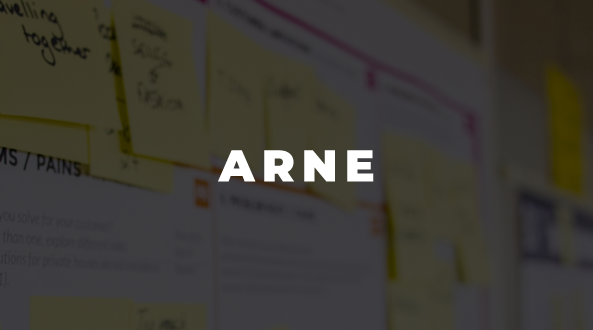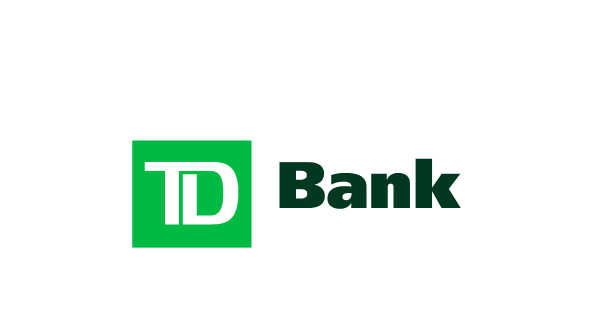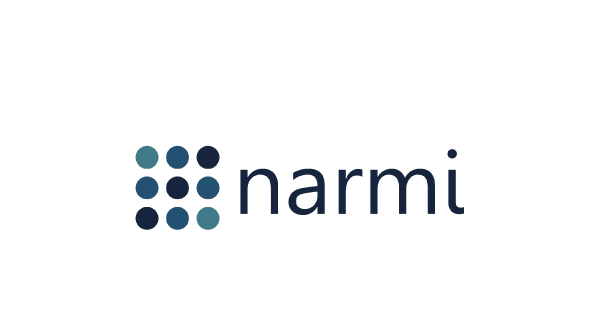Why leave one bank for another?
What makes someone close their business account at one financial institution so that they can open an account at a different institution? Pay close attention to the many forces at play that, taken together, may influence a customer to find something better.
Carmeisha
Listen to the full interview
Watch our interview breakdown

Our first interview tells the story of Carmeisha. She is a gifted dessert maker, and has been making and selling banana pudding, cakes, and other tasty treats since 2015. In the summer of 2017, she realized that her burgeoning business would require a business account, fast. Why? And why did she decide on an institution where she was not currently banking? We spoke with her to learn more.
Carmeisha started her story by telling us about her business. Her passion is making banana pudding, and her friends and family agreed that it was the best. She began by selling to loved ones and soon branched out to Facebook connections. At first, she was fine selling in person and taking cash payments, but things started to move fast.
Word began to spread about her delicious offerings and in Thanksgiving of 2017, Carmeisha looked over her very crowded kitchen table full of orders and thought to herself, “I need a business account.” This realization set off a chain of events that would eventually land her with a different bank than where she started — and it took her three years to get there.
What specific forces influenced Carmeisha to find a much bigger institution than where she was currently banking? What solutions did this other institution offer, especially when it came to technology? And why did it take her several years to find it?
Opening an Business Account
Why Leave One Bank for Another?
Clearly, Carmeisha had no issues peddling her pudding, but she still wasn’t sure if she was turning a profit: “I was making the money, but I felt like I wasn’t really seeing the money.” This is when she decided that she needed to “get organized.” There was another important anxiety at work here too: her pricing. Was Carmeisha charging her customers enough to maintain a healthy bottom line?
As an institution, share success stories that resonate with small business owners.
Focus less on your account features (most of which are undifferentiated). Instead, focus more on how your financial institution understands business customer needs and is ready to help along the way.
Opening an Business Account
Why Leave One Bank for Another?
Two years after starting, Carmeisha opened a business account at the same credit union where she was handling her personal account. As she had intended, she now had a separate account from which to pay for supplies and other expenses. Her business also grew significantly during this period. Nevertheless, Carmeisha still wasn’t sure if she was turning enough of a profit. The possible culprit? Pricing.
“I'm spending this amount on [supplies]. This is what I'm making. And it was just a lot going on. So, I'm like, you know what? Let me come back and then reorganize my pricing. So that was the big issue for me.” Carmeisha did eventually raise her pricing to match competitors more closely. However, it was also becoming clear that her account was just not keeping up with her needs.
Be proactive in educating customers about ways that they can grow their small business and tell customer success stories.
This might be a good way to counter bigger FIs that offer more diverse capabilities.
Opening an Business Account
Why Leave One Bank for Another?
Fast forward to 2017, on the Fourth of July. Carmeisha receives a mailer from Chase promoting a new incentive: $300 credit for opening a business account. “I could use that extra money,” she thought. Chase had already been on her mind. Her close friend had banked there, and had recommended them on several occasions. She had explained to Carmeisha that it wouldn’t hurt to try them. And if she wasn’t happy, she could always try something else. These two forces — her friend plus the cash incentive — helped pull Carmeisha to opening a new account.
There was one other anxiety at play: Carmeisha was not happy with the mobile banking app offered by her credit union. “It felt like they were using older technology,” she told us. “But when I went with Chase to open up the account, I thought there was a huge difference from what I [had been using].”
Don’t hold back when it comes to promotions and marketing campaigns. Third-party apps and big banks are very consistent in this regard.
Opening an Business Account
Why Leave One Bank for Another?
Carmeisha also discovered another feature available in the Chase app: the ability to take card payments from customers. This feature, she told us, “was the main thing” that drew her in. Interestingly, she had also paid for a similar service with her previous account at the credit union, but it had never worked to her expectations. “It was just frustrating! So, like I was trying to take a payment from a person, and then it's not working. It's offline, or it wasn't connecting.” As a result, Carmeisha had resorted to using third-party apps, like Zelle and Cash app.
Takeaways
If a service doesn’t work out for a customer, follow up.
Figure out ways to still serve that customer to create trust and retention long term.
Think about ways to upsell and cross-sell to create account stickiness.
Don’t make it easy for a customer/member to close account and/or leave your institution.
HTML
CLIP 1
Clearly, Carmeisha had no issues peddling her pudding, but she still wasn’t sure if she was turning a profit: “I was making the money, but I felt like I wasn’t really seeing the money.” This is when she decided that she needed to “get organized.” There was another important anxiety at work here too: her pricing. Was Carmeisha charging her customers enough to maintain a healthy bottom line?
Opening an Business Account | Why Leave One Bank for Another?
Takeaway
As an institution, share success stories that resonate with small business owners. Focus less on your account features (most of which are undifferentiated). Instead, focus more on how your financial institution understands business customer needs and is ready to help along the way.
Two years after starting, Carmeisha opened a business account at the same credit union where she was handling her personal account. As she had intended, she now had a separate account from which to pay for supplies and other expenses. Her business also grew significantly during this period. Nevertheless, Carmeisha still wasn’t sure if she was turning enough of a profit. The possible culprit? Pricing.
“I'm spending this amount on [supplies]. This is what I'm making. And it was just a lot going on. So, I'm like, you know what? Let me come back and then reorganize my pricing. So that was the big issue for me.” Carmeisha did eventually raise her pricing to match competitors more closely. However, it was also becoming clear that her account was just not keeping up with her needs.
HTML
CLIP 2
Opening an Business Account | Why Leave One Bank for Another?
Takeaway
Be proactive in educating customers about ways that they can grow their small business; also tell customer success stories; this might be a good way to counter bigger FIs that offer more diverse capabilities.
Fast forward to 2017, on the Fourth of July. Carmeisha receives a mailer from Chase promoting a new incentive: $300 credit for opening a business account. “I could use that extra money,” she thought. Chase had already been on her mind. Her close friend had banked there, and had recommended them on several occasions. She had explained to Carmeisha that it wouldn’t hurt to try them. And if she wasn’t happy, she could always try something else. These two forces — her friend plus the cash incentive — helped pull Carmeisha to opening a new account.
There was one other anxiety at play: Carmeisha was not happy with the mobile banking app offered by her credit union. “It felt like they were using older technology,” she told us. “But when I went with Chase to open up the account, I thought there was a huge difference from what I [had been using].”
HTML
CLIP 3
Opening an Business Account | Why Leave One Bank for Another?
Takeaway
Don’t hold back when it comes to promotions and marketing campaigns; third-party apps and big banks are very consistent in this regard.
Carmeisha also discovered another feature available in the Chase app: the ability to take card payments from customers. This feature, she told us, “was the main thing” that drew her in. Interestingly, she had also paid for a similar service with her previous account at the credit union, but it had never worked to her expectations. “It was just frustrating! So, like I was trying to take a payment from a person, and then it's not working. It's offline, or it wasn't connecting.” As a result, Carmeisha had resorted to using third-party apps, like Zelle and Cash app.
HTML
CLIP 4
Opening an Business Account | Why Leave One Bank for Another?
Takeaway
If a service doesn’t work out for a customer, follow up; figure out ways to still serve that customer to create trust and retention long term.
Think about ways to upsell and cross-sell to create account stickiness; don’t make it easy for a customer/member to close account and/or leave your institution.
Janice
Listen to the full interview
Watch our interview breakdown

Our second interview is the story of Janice. She has been a consultant since 2013, helping introverts to become better at networking. In March of 2020, she moved to the US. Since arriving, she has closed two business accounts, and opened a new one. Why? We chatted with Janice to uncover her story.
Janice began by providing some background on her move: she entered the US at the start of the pandemic, making it difficult for her to establish her legal residency, much less her new bank accounts. Although Janice emigrated from Mexico, she had long held a business account in the UK with HSBC. She primarily used this bank to receive customer payments, and just as importantly, also paid annual taxes to the UK government through this account.
Janice closed her HSBC account as soon as she arrived (we’ll learn why later). After an intense period of research, she settled on a new US-based bank for her business, but then promptly closed that account just a year later. She finally settled on a new bank, Chase, where she opened both a business and a personal account — and has been baking there ever since.
What specific forces drove Janice to change banks, twice? What solutions did the new bank offer, especially in comparison to the old bank? What forces pushed Janice to make a decision? And did any anxieties play a role?
Opening an Business Account
Why Leave One Bank for Another?
Initially, Janice did not have an easy time opening a new business account. Because she was new to the US, this made it “incredibly difficult” to open an account. Strangely, she pointed out, it was far easier to open a business account than a personal account. “I was hoping that my business bank account would show them that I’m a real human being,” she expressed, in frustration.
Business owners often desire to open both personal and business accounts at the same financial institution. Financial institutions should look for ways to both cross-promote personal accounts for business owners and leverage business account owner data to reduce friction in opening a personal account.
Opening an Business Account
Why Leave One Bank for Another?
Although Janice could have continued with her current arrangement, she felt an urgency to close her HSBC account. We soon find out exactly why. If she had chosen to continue operating out of a UK account, she would have been forced to pay taxes to both the UK and now the US!
The good news is that Janice found an online bank willing to help her: nbkc. And she was able to open both a personal and a business account. However, Janice’s preference had always been to go with a “bigger company” that is “more well known,” like Chase.
Takeaways
Think about ways to bundle personal and business accounts to make it easier for an applicant to apply for both at once.
Be aware of taxes and their deadlines; time marketing pushes to coincide with these ongoing, annual events (especially for small businesses).
Opening an Business Account
Why Leave One Bank for Another?
Another wrinkle to Janice’s story soon came to light. Because Janice is a prolific world traveler, she worried about fraud. She felt that her bank should provide robust protection related to her account, such as through real-time alerts. “Skimming is still a thing in a lot of countries,” she pointed out. She felt especially vulnerable because she would be traveling with only a debit card (a credit card was still out of reach, as she was still in the process of establishing her residency).
Takeaways
Regarding app notifications and alerts, institutions should make explicit what type of alerts can be set up, and ensure that it’s easy to do so.
Possibly think around other avenues to deliver notifications that might go beyond the app experience; this may also help allay customer anxiety around travel.
Opening an Business Account
Why Leave One Bank for Another?
The other force that attracted her to Chase, beyond the account security, has to do with her phone being registered in Mexico. Janice discovered after some research in the Google Play store, that out of her three front-runners (Chase, Capital One, and another bank), only the Chase app would be available to her (despite her phone not being registered in the US).
So why not just switch her phone over to the US? Our interviewer asked. This was a no-go for Janice. Her phone is connected to an existing personal account based in Mexico, she explained. And she uses it to pay for her Mexican property as well as a number of utilities and subscriptions (including a Formula One account). She was not about to tamper with this arrangement!
Takeaways
Be sure that your app description inside the App store/Play store provide sufficient information; mention available alerts here too.
Think about alternative channels of account research (e.g., YouTube, NerdWallet, Reddit groups); invest in those channels to widen searches and engage prospects more effectively.
Clearly, Janice had thought through her various options, and demanded an account that could meet all of her needs. The good news for Janice? She eventually found the right provider for her very specific needs: Chase.
Takeaways
Checking product pages should lean towards providing more content and information versus less, such as through FAQs and comparison charts.
If you’re a credit union, consider campaigns that target prospect misconceptions, especially around tech capabilities and offerings.
Darius
Listen to the full interview
Watch our interview breakdown

Our third interview tells the story of Darius. He and his wife were inspired to purchase a portable photo booth after renting one for their daughter’s graduation. This experiment quickly grew profitable as they began to book events for friends and family. Just a year later, in 2016, they decided that their side hustle would require a business account. What happened? And why did they settle on Chase initially, only to change banks just a few years later? We spoke with Darius to get the details.
Darius began his story by describing their early success. In just a few months, they went from side hustle to full-blown business. But they realized that the best way to continue to grow was to gain a clearer “vision” of their finances. Their problem was one that plagues many new businesses: what are they spending only on their business? And how do they figure out a budget? The intertwining of the two, personal and business, was fast turning into “spaghetti,” he told us.
And then there was the matter of their clientele. To continue to grow, they needed to land bigger events, like corporate parties and school functions. A personal account would not do for these bigger entities. School districts required vendors to be insured, Darius explained. And corporate clients were not comfortable paying individuals — they expected to contract with actual businesses.
Darius and his wife quickly settled on Chase for their business account. But just a few years later, after facing a particularly stressful circumstance, they jump shipped to another large rival, Capital One.
What specific forces drove Darius and his wife to settle on the first bank, only to change banks just a few years later? What solutions did the new bank offer, especially in comparison to the old bank? And did any anxieties play a role in their decision making?
Opening an Business Account
Why Leave One Bank for Another?
Initially, Darius and his wife decided that Chase would become their bank. They already banked there, and they wanted to ensure that they could handle all of their banking in one place, at the same time. This simplicity attracted them, despite the fact that they were only beginners, and didn’t fully understand what they would need as a business. “They already had our information, so let’s just go from there,” Darius said.
Market explicitly to consumers who are looking to separate their personal from business transactions. Messaging should come from a place of empathy and speak more to the pain point — the reality of having to sit at a table trying to figure out what transaction belongs where — versus simply dictating best practices for new businesses.
Opening an Business Account
Why Leave One Bank for Another?
Our interviewers dug deeper. It was clear that Darius and his wife had decided on Chase mostly out of convenience. But they wanted to get a fuller picture of the various accounts available to the couple as they explored the bank’s offerings. How did the initial meeting with the banker go? What were their specific needs as a business? And why did they decide on one account over another?
Develop products and services that are geared toward new business owners who are feeling anxiety about choosing the right checking account. Consider offering a “business starter” account that is designed specifically to help businesses get off the ground with the basic account features and payment acceptance tools they require immediately, while only charging minimal fees.
Opening an Business Account
Why Leave One Bank for Another?
Soon after setting up their business account at Chase, Darius and his wife were ready to take their business to the next level. They had already committed full time to their photo booth rental service, taking it from a side hustle to a full-time enterprise in just a few years, including setting up an LLC. And now they had the critical business banking relationship to go along with it. They were ready to go after more lucrative events, such as those put on by bigger companies.
Things were going well. Even as their business grew, Darius continued to receive offers from competing financial institutions. The promotions were enticing – in particular the percentage-based card rewards offered by another bank. Although the seed was planted, these offers were not compelling enough on their own for Darius to justify making the jump. After all, the “grass is not always greener on the other side,” he explained.
Takeaways
As an institution, commit a similar level of effort to retaining existing business accounts as you do to attracting new ones. For example, consider creating engaging and attractive documentation that helps a customer better understand the products and services that they are already paying for.
Continue to inform and educate current account holders about the capabilities and benefits that are available to them as customers of your institution. For example, ensure that business customers understand how to set up account alerts and app notifications.
Opening an Business Account
Why Leave One Bank for Another?
One day, Darius realized that there had been some international charges posted to his account — clearly a case of fraud. Chase responded by putting a “freeze” on his account and promised to investigate further, Darius told the interviewers. In his view, this was just not acceptable. Prior to this incident, Darius had recounted another bad customer support experience with his personal account that had also involved fraud. It was clear he had had enough: “I did not feel they were worthy of my business,” he told the interviewers. As far as Chase was concerned, “I was out.”
When helping business owners through fraud and other stressful situations, ensure that your staff is trained to project empathy and understanding, and is willing to go the extra mile to deliver outstanding service. These sorts of circumstances, and how they are handled, can often make or break an existing customer relationship.
Opening an Business Account
Why Leave One Bank for Another?
Darius was ready to find a new banking partner, and his search would be as straightforward as the first time. “I had already been doing research,” he said. Although he had a list of questions for his candidates, including how they would handle fraud, Darius posed an even more critical concern: “To be honest with you, how many of them make you feel wanted?” he asked our interviewer. It was clear that it would not be enough to find the right mix of products and benefits — they had to convince him that they wanted his business, too.
Darius settled on Capital One for several reasons. He appreciated the free business checks and the credit card rewards, all of which translated into cost savings, he explained. Concerning fraud support, they offered account alerts triggered by exceeding specific thresholds. And if fraud did occur, they were happy to overnight a new card for free. But ultimately, his decision was about more than fees or rewards. “Was it about feeling cared for?” Our interviewer asked. Darius concluded with a simple but resounding answer: “Yes.”
When dealing with prospects who are shopping around for a new account, find creative ways to signal to them that you are interested in their business — that you care about their success. Oftentimes, prospects just need reassurance. This supportive context will then help to make your offerings more attractive, even if they are essentially undifferentiated.
Arne
Listen to the full interview
Watch our interview breakdown

Our fourth interview tells the story of Arne. He is currently a director of operations, and has been working with the same startup since its beginning. As is the case with most venture-backed startups, Arne’s company had decided to prioritize its path to profitability. As part of that effort, Arne began to look into their banking setup and fee structure — hoping to find some ways to cut costs. What did he discover? And why did he eventually decide to switch banks? We spoke with him to find out.
Arne started his story by describing his company’s founding. It was spun out from a parent company that had a longstanding banking relationship. Because his startup was moving quickly, they continued with the same institution. But it was not a good fit from the start, he told us. And on top of that, several issues emerged. Ultimately, it would take several years — and one particularly negative experience — before he decided he’d had enough.
What specific forces influenced Arne to finally move their banking to a different provider? And why did he choose to go with a challenger that had just recently expanded into traditional banking? What sort of factors differentiated this provider? And is he satisfied with his choice?
Opening an Business Account
Why Leave One Bank for Another?
Through the course of his investigation, Arne realized that they were overpaying for “archaic” services they didn’t need, especially for his company’s size. And the monthly fees were just too high. Arne did not understand why they needed to pay $800 a month to their bank — an amount that seemed “astronomically high” for a small company, and what they were getting in return.
On top of that, Arne had not been successful in getting the bank to switch ownership of the account over to his company (it was still held by the original parent company). However, this was not his only frustration. As he went deeper into his story, he recounted a litany of ongoing pain points.
Opening an Business Account
Why Leave One Bank for Another?
Because their parent company had now left the same bank, Arne felt that communication had broken down with the bank. They were not the original account owners, after all. And he added, “They were not interested in solving our problems.” However, Arene was not ready to give up on the relationship quite yet. Instead, he decided to focus on the cost cutting. What could they get from their bank in return for a reduced fee (even if they were not able to meet his expectations)?
Return the phone call. Let your customers know that they’ve been heard. Follow up on commitments, especially if the customer is expecting some sort of resolution to their specific situation. If you can’t meet the ask, simply say no and why. But above all, do not violate the trust you’ve worked hard to establish.
Opening an Business Account
Why Leave One Bank for Another?
The best course of action, Arne decided, would be to meet with their banker to review their current setup and to reduce their monthly fees. He was also hoping that he could get some sort of refund in the process, as their fee structure had not been in line with their usage for several years. During the meeting, the bank promised to reduce the fee. Arne came away with some satisfaction. However, this feeling would not last.
The monthly fee did not change, Arne told the interviewers. It actually went up the following month! Arne continued to reach out in the ensuing months — a frustrating process that did not seem to resolve any lingering issues. And then Arne received an email from his banker that would become the last straw. His banker, it turns out, had not taken any notes during the meeting, and was now asking to review his requests once again.
We’re all familiar with upselling and cross-selling, but it’s also crucial to find the right product fit for the customer. Ensure that your customer is receiving good value from the products and services they are paying for. If they are overpaying because the fit is not ideal, be proactive by reaching out and recommending a product or service that might work better for them. This is a long-term strategy that will build trust and loyalty, and also help to reduce churn.
Opening an Business Account
Why Leave One Bank for Another?
Opening an Business Account
Why Leave One Bank for Another?
Arne was ready to move on. He presented his case to the CEO, and was given the greenlight to take the next steps and begin the selection process. He demoed the candidates on his shortlist, with his highest criterion being price. A close second would be good customer support. They needed to partner with a bank that was reliable — that would follow through on their promises. Third on his list was the user interface and overall experience. He set this barrier low, however, as Arne understood no bank would be “perfect” in this regard. At the very least, he wanted a single login for online banking, versus the three he had been forced to use previously.
After considering several big banks, Arne went with a company that he knew well and was already very happy with: American Express. He pointed out that not only were they their current business card vendor, but throughout their relationship, had consistently provided “flawless” customer support. And to Arne’s surprise, their new account would add up to “zero dollars” a month (their credit card would continue to cost the same), and would generate rewards points as a result of carrying a monthly balance. Arne was absolutely jubilant, and did not hide his feeling from our interviewers.
There was only one wrinkle — the deposit account was a new offering from American Express. And up to the point of the recording, Arne had yet to test the mobile deposit capture feature. Nevertheless, Arne expressed that his “trust was high,” and remained optimistic.
Set clear expectations with customers as to your institution’s core competency. Banking has become overly complex; as such, find what you are good at and focus your energy on growing from that standpoint. If you are a relationship-first institution, embrace that and build on it. If you’d rather focus on digital first, then build on that priority. Try to not be all things to all people — you will likely not succeed.
What makes someone close their business account at one financial institution so that they can open an account at a different institution?
Pay close attention to the many forces at play that, taken together, may influence a customer to find something better.
Opening an Business Account
Why Leave One Bank for Another?
Question: What do you consider to be universally true about small business banking?
To a small business owner, a small business is anything but “small.” If anything, it means the world to them. As such, small business customers should be given the same treatment as any other business customer, big or small.
Opening an Business Account
Why Leave One Bank for Another?
Question: What is TD Bank’s holistic approach to business account opening — from online to in-person?
- Focus on simplicity and customer-centered design. Find ways to clearly differentiate between the business account products, both online and in a branch.
- Ensure that the offering is presented in a way that makes sense to a business owner, so that a prospect can choose the right account from the get-go.
Opening an Business Account
Why Leave One Bank for Another?
Question: How do you learn from small business customers, and how do you apply those insights?
- It’s important to always listen to feedback. For example, always test your value prop with customers. They likely do not see things the same way.
- Don’t forget about talking to the frontline staff. They have a good feel for what small business owners are looking for in a product.
- Don’t ignore complaints as a way to learn what a customer is really thinking, and how to improve as an organization to meet those needs or challenges.
Opening an Business Account
Why Leave One Bank for Another?
Question: What are some good indicators, specifically during account opening, of long-term customer retention?
There are several key metrics that we track, such as:
- Number of new accounts per month
- Time of onboarding
- Activity within the account post account opening
- Post account opening; how active is the customer?
- The first three months are key; establish some key indicators/time-based events to show that the customer is satisfied. And if they are not, make it easy for your sales team to identify any issues early on, before there is a flight risk.
- For example, reach out to a customer if they are no longer making regular deposits into an account.

Opening an Business Account
Why Leave One Bank for Another?
Question: Tell us about something that most financial institutions overlook during business account opening? Let's start there. What's the most overlooked thing that you’ve found when it comes to business account opening?
- Financial institutions should consider the verbiage that they use, the “language market fit,” to ensure that their audience (the customer) understands what is being conveyed or in the case of an application, the information that is required. It is best to avoid jargon or industry speak whenever possible.
- Positive pay, for example, is a product/service that can become a great solution for many businesses. However, due to its odd industry name, it is often misunderstood and sometimes outright disregarded!
- Another example of a misunderstood term that is asked for in the account opening process is the NAICS code. We had a significant drop-off in applications any time we asked for this information. As a result, we had to modify the language to make it more user friendly.
Opening an Business Account
Why Leave One Bank for Another?
Question: Regarding measurement for account opening, how do you bet approach that? What are some of the tactics and tools you're using? And when you're measuring the funnel, when you receive that information, how are you sharing that back to financial institutions?
- One important set of metrics that we look at is the completion rate for the various steps within the application process online. That allows you to then get more granular, and figure out what steps are working, and which ones are not.
- Historically, these kinds of applications could take hours or days in a physical branch. We are streamlining this process and figuring out what information and requirements businesses need, even before they start the process, so that they can be better prepared.
- Of course, we also look at time and sessions — how long did it take for a business to complete the process. This allows us to better gauge where we can reduce that friction.
Opening an Business Account
Why Leave One Bank for Another?
Question: A lot of financial institutions have business owners walk into the branch, and many banks are just really good at in-store sales. So how does digital account opening complement the in-branch experience?
- Historically, the business account opening process has been a pain point for financial institutions. It can take multiple visits to a branch, it may require multiple documents, and so on. But that needs to change. If anything, it should be a more straightforward affair, especially online.
- One way forward is to make the online and the physical process as similar as possible, and allow for customers to go back and forth in a more seamless fashion. In other words make it one experience: the customer can start online and then move it to the branch, or vice versa.
- If you offer online account opening, make it a great experience. A business owner typically has high expectations for online experiences — and the fact that they should be easy and straightforward. They’re also retail consumers, after all.
Opening an Business Account
Why Leave One Bank for Another?
Question: How do you blend in and approach cross sales — product add-ons, if you will, during account opening? And how do you tell prospects about those product lines and feature capabilities (product selection)?
- Most applicants are primarily interested in opening just one checking account — we estimate around 85% will only open a single account. However, around 15% will want to open multiple accounts, so a financial institution needs to be able to accommodate for that need in a seamless way.
- It’s important to not overwhelm your applicant with too many granular questions too quickly. An applicant may not know the answer to many of these questions, so it’s best to strike a balance and start by focusing on the critical information that you’re required to collect from business applicants.








